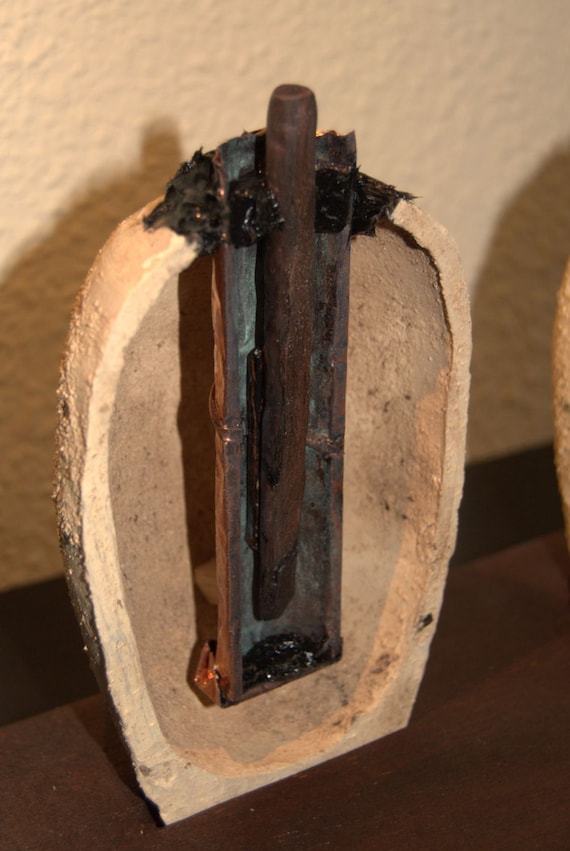In 1938, archaeologist Wilhelm König uncovered an enigmatic artifact during excavations in the ancient city of Ctesiphon, near modern-day Baghdad, Iraq. This object, now famously known as the Baghdad Battery, continues to captivate historians, archaeologists, and scientists alike. Estimated to be approximately 2,200 years old, the artifact dates back to the Parthian Empire, which flourished from 247 BC to AD 228. Preserved in Iraq’s National Museum, the Baghdad Battery has become a symbol of ancient innovation and an enduring mystery.

The Structure and Components of the Baghdad Battery
The Baghdad Battery consists of a simple yet intriguing assembly:
- A clay jar serves as the container, measuring around 13 cm (5 inches) in height.
- Inside the jar is a copper cylinder, constructed from a rolled sheet of copper that is soldered at its seam.
- A central iron rod, inserted through the copper cylinder, is insulated from it, possibly by an organic stopper such as bitumen.
This design suggests that when the jar was filled with an acidic liquid, such as vinegar, grape juice, or lemon juice, it could potentially generate an electric charge, similar to a galvanic cell.

Theories on Its Function
The function of the Baghdad Battery remains a topic of debate. Some of the most prominent theories include:
1. Electroplating
One of the most widely discussed possibilities is that the battery may have been used for electroplating. This process involves depositing a thin layer of metal, such as gold or silver, onto a surface. Evidence of electroplated artifacts from antiquity has yet to be conclusively linked to the Parthian Empire, but this theory suggests a sophisticated understanding of chemistry.
2. Religious or Healing Rituals
Another theory proposes that the battery might have had a ceremonial or symbolic purpose. In religious practices, the creation of a faint electric current might have been perceived as a manifestation of divine energy or used for therapeutic purposes in healing rituals.
3. A Scientific Experiment
It is also possible that the artifact was an early scientific experiment or a prototype. The combination of components demonstrates a level of curiosity and knowledge about natural phenomena that hints at the Parthians’ innovative spirit.
Significance in Understanding Ancient Innovation
Whether or not the Baghdad Battery functioned as an actual power source, its existence is a testament to the ingenuity of the Parthian Empire. The artifact challenges conventional views about the technological capabilities of ancient civilizations, raising questions about their knowledge of electricity and chemistry.

The discovery also emphasizes the interconnectedness of ancient cultures. Techniques and ideas could have been shared across regions, potentially influencing the development of similar technologies in neighboring civilizations.
The Ongoing Debate
The purpose of the Baghdad Battery remains unresolved, leaving it open to interpretation and further research. Some skeptics argue that its design could be coincidental, with no intentional electrical function. Others maintain that it represents a deliberate attempt to harness natural phenomena for practical or symbolic purposes.
Conclusion
The Baghdad Battery is more than just an artifact; it is a gateway to understanding the creativity and resourcefulness of ancient societies. Its discovery challenges modern assumptions about the limits of early technology and continues to inspire curiosity and debate. As research and exploration progress, this artifact may one day provide clearer answers, further illuminating the extraordinary capabilities of the Parthian Empire. Until then, the Baghdad Battery remains a powerful reminder of humanity’s timeless quest for knowledge and innovation.

